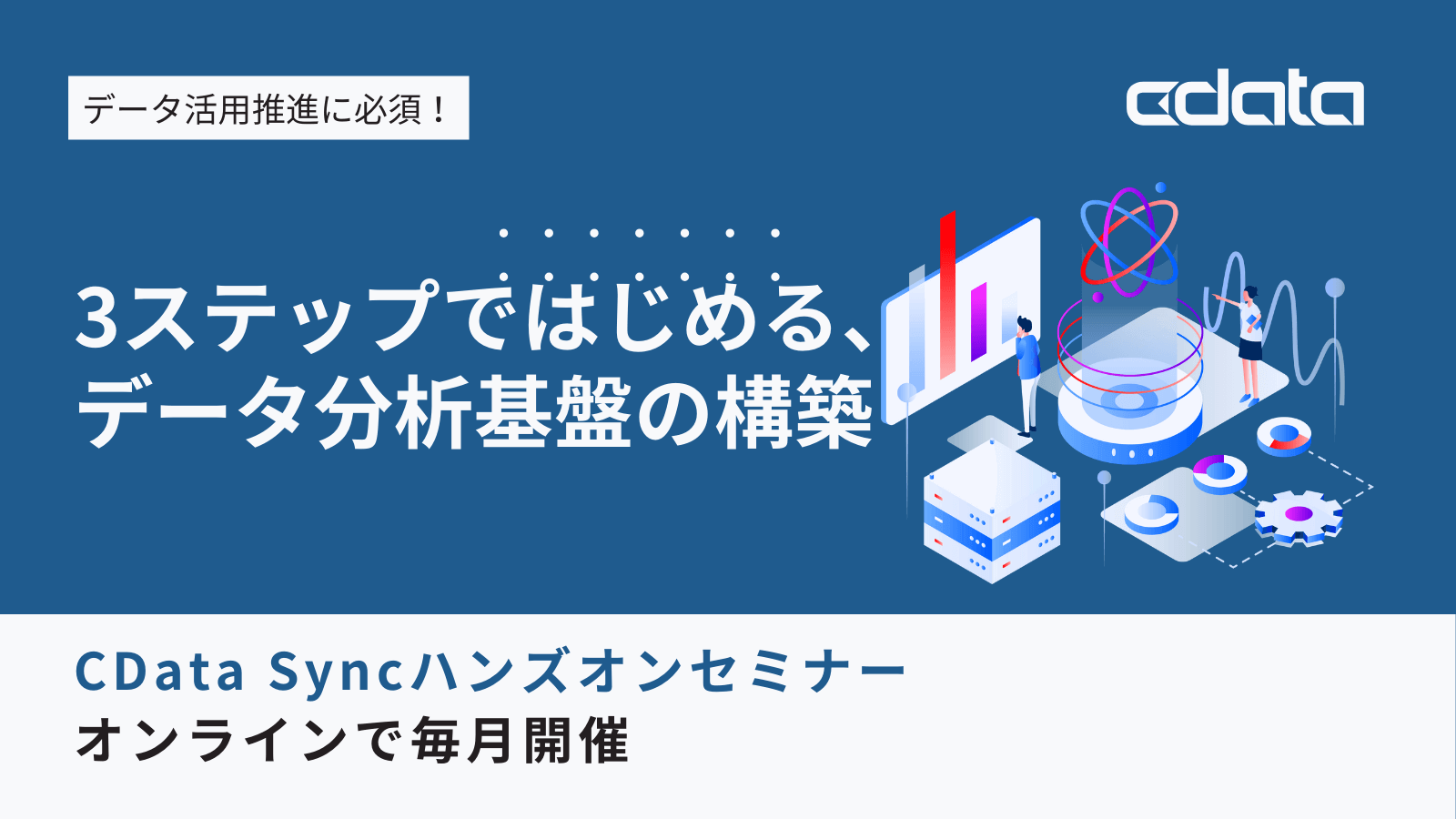ノーコードでクラウド上のデータとの連携を実現。
詳細はこちら →CData Software Japan - ナレッジベース
Latest Articles
- MySQL のデータをノーコードでREST API として公開する方法:CData API Server
- CData Sync AMI をAmazon Web Services(AWS)で起動
- Connect Cloud Guide: Derived Views, Saved Queries, and Custom Reports
- Connect Cloud Guide: SSO (Single Sign-On) and User-Defined Credentials
- Connect Cloud クイックスタート
- Shopify APIのバージョンアップに伴う弊社製品の対応について
Latest KB Entries
- DBAmp: Serial Number Expiration Date Shows 1999 or Expired
- CData Drivers のライセンスについて
- Spring4Shell に関する概要
- Update Required: HubSpot Connectivity
- CData Sync で差分更新を設定
- Apache Log4j2 Overview
ODBC Drivers
- [ article ] PyCharm でCData Software ODBC Driver を使ってPayPal に接続
- [ article ] SharePoint Excel Services データからSQL Server ...
- [ article ] PyCharm でCData Software ODBC Driver を使ってAzure Data ...
- [ article ] Yahoo! Ads データをBoard に連携してビジュアライズを作成
JDBC Drivers
- [ article ] Bullhorn CRM データをDataSpider Servista の連携先として使う方法
- [ article ] JRuby からAzure Active Directory にデータ連携
- [ article ] ソフトウェア開発ツールMZ Platform でImpala データと連携
- [ article ] Couchbase データをRACCOON から連携して利用
SSIS Components
- [ article ] Google Directory をSSIS 経由でSQL サーバーにバックアップする
- [ article ] SSIS を使ってLinkedIn Ads データをSQL Server にインポート
- [ article ] SSIS を使ってスマレジ データをSQL Server にインポート
- [ article ] SSIS を使ってNetSuite データをSQL Server にインポート
ADO.NET Providers
- [ article ] Infragistics WPF XamDataGrid と PostgreSQL をデータバインド
- [ article ] Visual Studio でチャートコントロールと Hive をデータバインド
- [ article ] Adobe Commerce データからSQL Server ...
- [ article ] Infragistics WPF XamDataGrid と Salesforce をデータバインド
Excel Add-Ins
- [ article ] 生産スケジューラFLEXSCHE へExcel Online からデータを取り込む
- [ article ] Excel を使ってeBay にデータを追加したり、eBay のデータを編集する方法
- [ article ] LINQPad でExcel データを操作する方法
- [ article ] Excel を使ってXML にデータを追加したり、XML のデータを編集する方法
API Server
- [ article ] UI/UX 特化ローコード開発ツール NEXACRO BEYOND を使ってExcel ...
- [ article ] Apache Camel を使用してOData データと連携
- [ article ] Apache Cassandra へのOData データのETL/ELT ...
- [ article ] OData ODBC データソースとの間にInformatica マッピングを作成
Data Sync
- [ article ] DB2 へのTwitter データのETL/ELT パイプラインを作ってデータを統合する方法
- [ article ] Google Cloud SQL へのMYOB AccountRight データのETL/ELT ...
- [ article ] Oracle データベースへのOracle Eloqua データのETL/ELT ...
- [ article ] Apache Cassandra へのGoogle Analytics データのETL/ELT ...
Windows PowerShell
- [ article ] PowerShell からExcel データに接続してデータの取得・更新・挿入・削除・CSV ...
- [ article ] PowerShell を使ってYouTube Analytics データをSQL Server ...
- [ article ] Dynamics 365 Business Central データをPowerShell ...
- [ article ] Dynamics 365 データをPowerShell script でSQL Server ...
FireDAC Components
- [ article ] Delphi のGoogle Cloud Storage データへのデータバインドコントロール
- [ article ] Delphi のMarkLogic データへのデータバインドコントロール
- [ article ] Delphi のTwitter データへのデータバインドコントロール
- [ article ] Delphi のSalesforce Marketing データへのデータバインドコントロール





